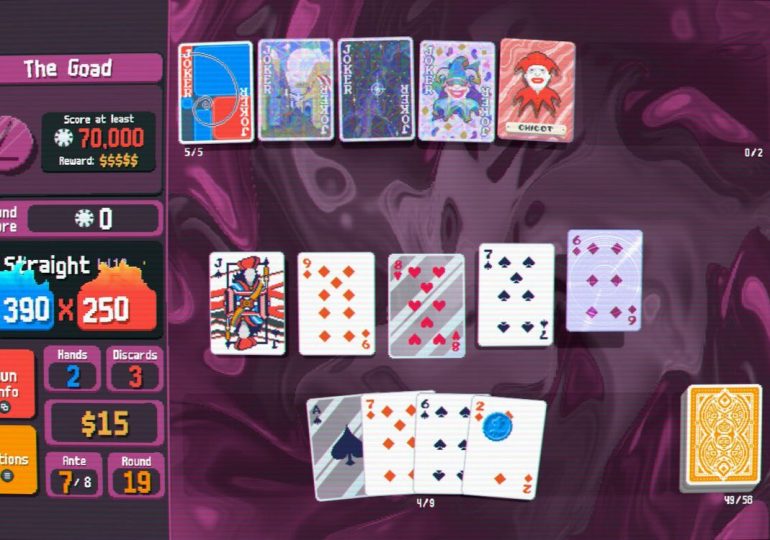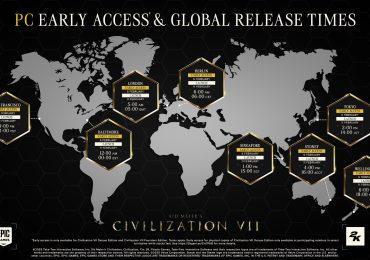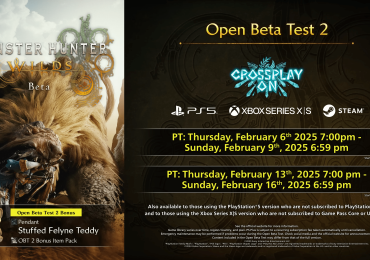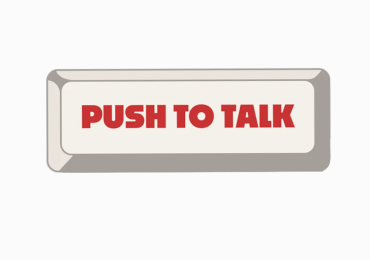The allure of the roguelike sells itself: rewarding repetition and the tantalizing hope that your next run, whether because of the new tools you’ve gathered, the new skills you’ve developed, or the new stats you’ve buffed, will be more successful than the last. Roguelikes are difficult to stop playing because, more often than not, you’re improving in some way.
Although roguelikes’ surge in popularity is still a recent phenomenon, their history dates back more than 40 years — since 1980, to be exact, which is when Rogue put the “rogue” in roguelike. That’s a lot of rogues.
Still, it’s only in the last decade or so that roguelikes entered the mainstream. They have become so trendy, in fact, that aspects of their makeup are now often visible in behemoth AAA efforts, from mechanics like permadeath, to procedurally generated dungeons, to build variety in their design ethos. Hell, one of 2021’s best games was a roguelike from a PlayStation first-party studio. This has led to somewhat of a saturation in the market, where it can often be difficult to know which game among hundreds is the one for you. That’s where we come in.
From intense romps through vampire-infested castles, to ruthless rampages through the depths of Tartarus, to carefully planned but quickly ditched assassination missions across the world, here are the best roguelikes you can play right now. Our latest update added Balatro.
Balatro
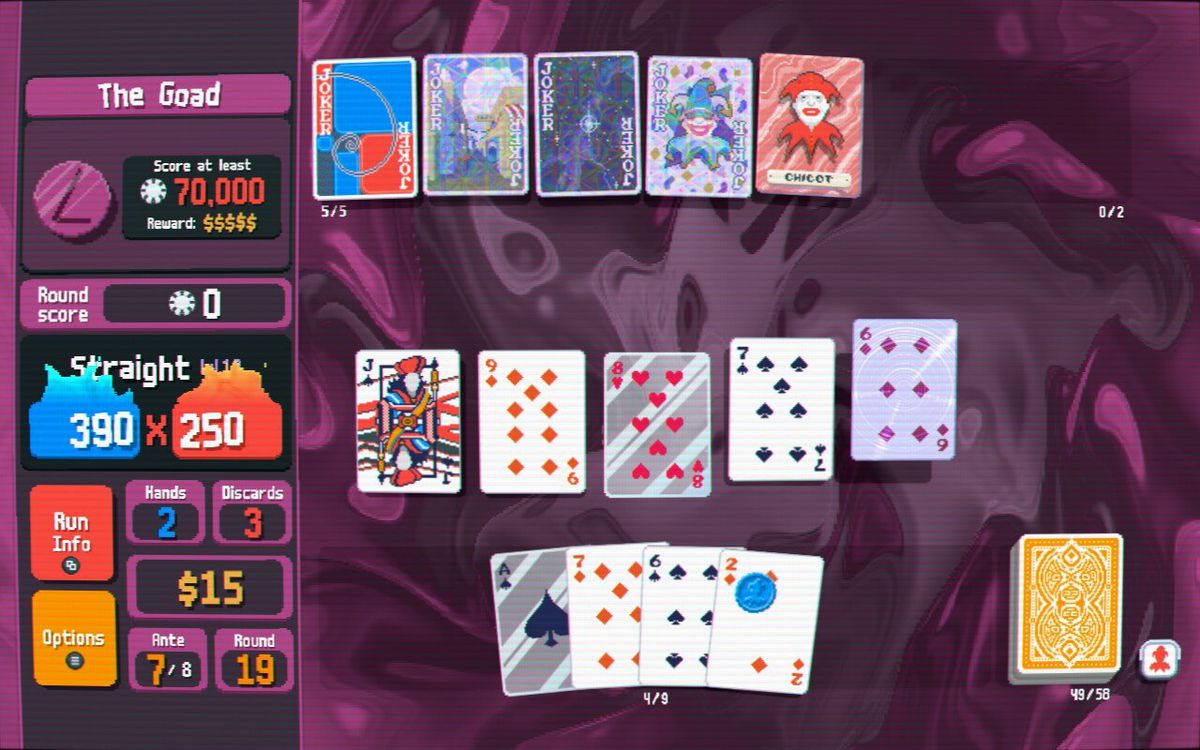
Where to play: PS4, PS5, Windows PC, Xbox One, and Xbox Series X
Yes, this is technically a roguelite, not a roguelike, but Balatro still hits all the notes you want from a roguelike while adding new wrinkles. An endlessly replayable variant of poker where you repeatedly stretch and break the rules of the classic card game, Balatro has a satisfying gameplay loop, an appealingly lo-fi visual aesthetic, and satisfying animations as you try to accomplish the age-old goal of “number go up.”
Solo developer LocalThunk has delivered one of the most fascinating games of 2024, and continues to iterate, with a big upcoming patch that promises to overhaul the experience once again. It’s a great combination of simple mechanics with a deceptive amount of depth. And as I put it in our list of the best games of the year, “it’s the most fun you’ll ever have with PEMDAS.” —Pete Volk
Atomicrops
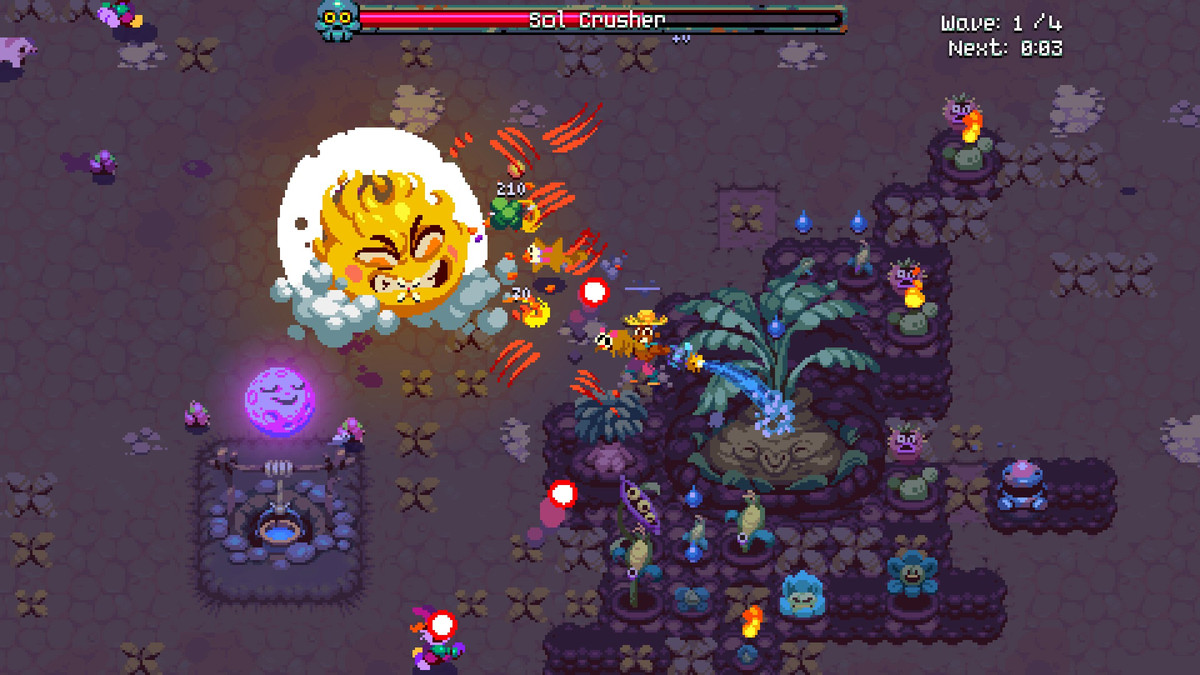
Where to play: PS4, PS5, Windows PC, Xbox One, and Xbox Series X
Farm, marry, kill. This is the mantra of Atomicrops, the chaotic, twin-stick farming simulator from Bird Bath Games and Raw Fury. By day, you’ll venture outside the walls of your post-apocalyptic homestead to loot the surrounding environments, returning when night falls to defend your farm from mutant slugs, rabbits, and other pests and use their corpses to feed your crops. At dawn, harvest the survivors to sell at market and arm yourself with new weapons and buffs.
Atomicrops is a bullet hell at heart, but there’s a tremendous amount of strategy involved with managing your crops as well. For example, placing the same plants together merges them into a more monstrous and profitable version, satisfyingly increasing your yield with the same number of seeds.
Every few days in Atomicrops represents a season, and at the end of each season, you’ll have a larger boss to contend with, in addition to the usual collection of enemies. If you survive, you’ll be granted bonuses based on your overall harvest for the season, which allow you to purchase permanent buffs for future runs.
Adapting to the chaos of Atomicrops is certainly a challenge, and you’re likely to get mulched on your first few runs. However, if you’re persistent, Atomicrops is a rewarding roguelike with a lot of charm. —Alice Newcome-Beill
Griftlands
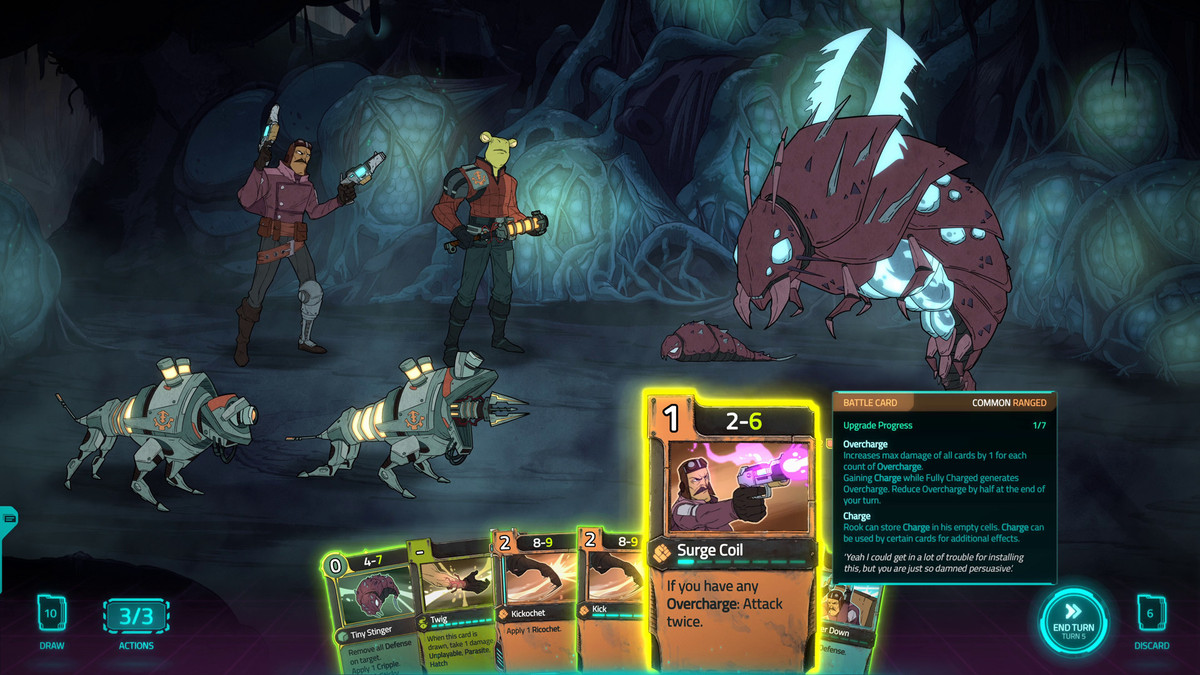
Where to play: PS4, PS5, Windows PC, Linux, Mac, Xbox One, and Xbox Series X
Griftlands is a story-driven deck builder courtesy of the animation experts at Klei, the studio responsible for games like Don’t Starve and Mark of the Ninja. In Griftlands, you take on the role of one of three intriguing ne’er-do-wells with their own unique stories and signature libraries of cards to draft from.
Every character uses two different decks to handle encounters: one for fists, and another for wits. The majority of random encounters and scripted jobs in Griftlands have a diplomatic option in addition to a route that’s a little more stabby.
You’re not expected to survive your first few runs of Griftlands, but each successful encounter accrues experience for a particular character, giving you access to new cards and starting decks and slowly buffing stats to give you a sense of persistent progress. Griftlands has some top-notch art direction and fantastic writing, and it’s one of the rare titles that makes negotiation just as interesting as combat. —ANB
Shotgun King: The Final Checkmate
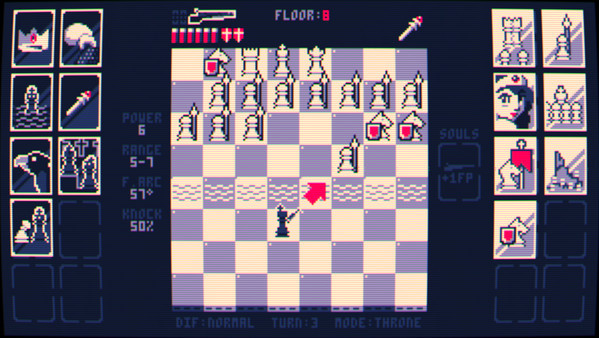
Where to play: PS4, PS5, Windows PC, Xbox One, and Xbox Series X
The king bows to no one in the lo-fi roguelike Shotgun King: The Final Checkmate. Based on a little indie game called chess (ever heard of it?), Shotgun King pits your solitary monarch against a growing army of enemy pieces. While a lone king would typically wouldn’t stand a chance against such odds, arming them with a boomstick levels the playing field substantially.
Each game of Shotgun King is divided into a series of 10 rounds played on a classic 8-by-8 chessboard. Blow away the opposing king and you’ll advance to the next board. However, the random element of this roguelike comes into play between rounds, where you’re forced to choose between two matched pairs of cards. One will offer you some kind of bonus, while the other will bolster the enemy. Some of these cards will offer flat buffs to damage, while some of the more eccentric options can drastically alter your run, like arming your king with explosives or forming a moat on your side of the board that restricts enemy movement.
While Shotgun King doesn’t offer a ton of persistent bonuses like Dead Cells or Hades, you can still unlock additional firearms by performing specific actions during a run. You’d think giving your king a slugthrower would provide an unfair advantage, but you can still be ’mated if you neglect planning a few moves ahead, abruptly ending your run. However, the rapid-fire nature of the gameplay makes it easy to convince yourself to make just oooone more run. —ANB
Dead Cells: Return to Castlevania
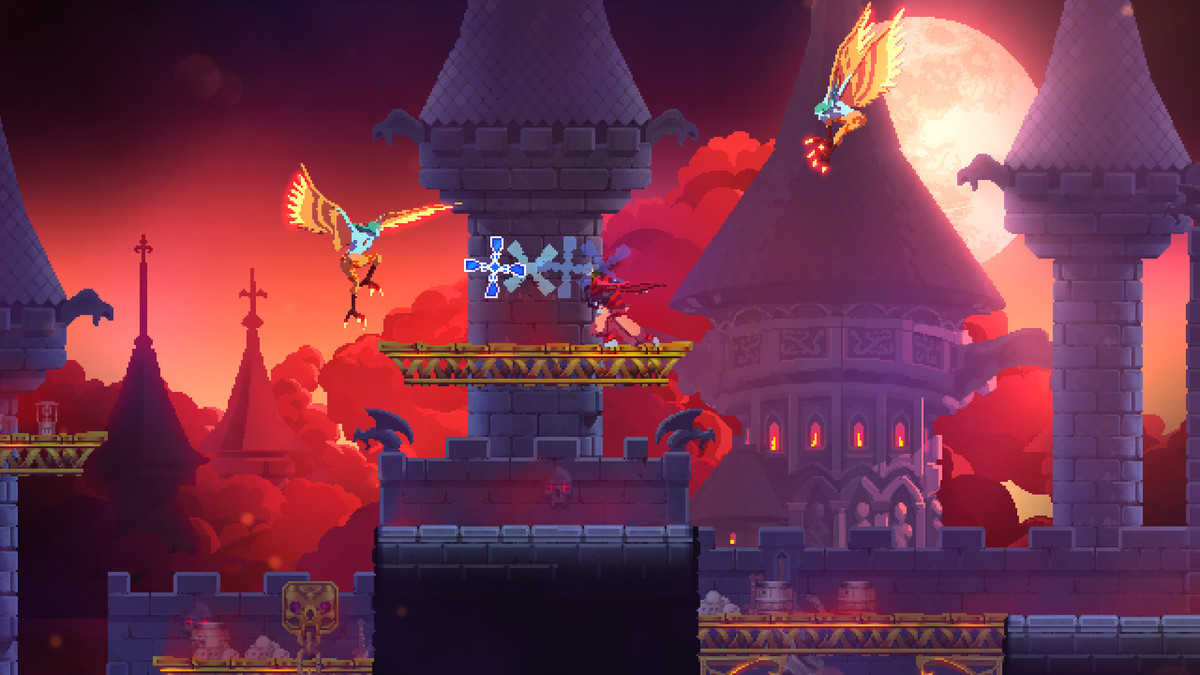
Where to play: Nintendo Switch, PS5, PS4, Xbox One, Xbox Series X, Windows PC, Android, and iOS
No list of the best roguelikes would be complete without Dead Cells, one of the purest and most popular games to ever liken itself to Rogue. It operates on sheer freneticism, with every jump and jab feeling vigorous yet deeply tactile.
A large part of Dead Cells’ appeal is its ability to blend its various influences into its own unique formula. While it functions as a roguelike, it is styled as a Metroidvania and borrows patterns from notoriously difficult games, namely FromSoftware’s Souls series. That is not a loose statement in the way most comparisons to Souls are — Dead Cells teaches you to intuit enemy behaviors until you reach a point where you can anticipate and ultimately foil them. It is a deeply satisfying game to learn, and is beyond deserving of the praise that it’s so often afforded.
Now, six years after its release, developer Motion Twin has released its fourth DLC, Return to Castlevania. It refreshes the game’s expansive array of weapons with tools straight out of Konami’s iconic series, including whips, crucifixes, and holy-water grenades. It also brings vampire-killing veterans Simon and Richter Belmont, Maria Renard, and Alucard, along with new gothic biomes and a swath of minor enemies and major villains. This DLC is as much an ode to Castlevania’s heyday as it is a reminder of Dead Cells’ staying power. What a gruesome, thrilling union. —Cian Maher and Mike Mahardy
Hitman World of Assassination
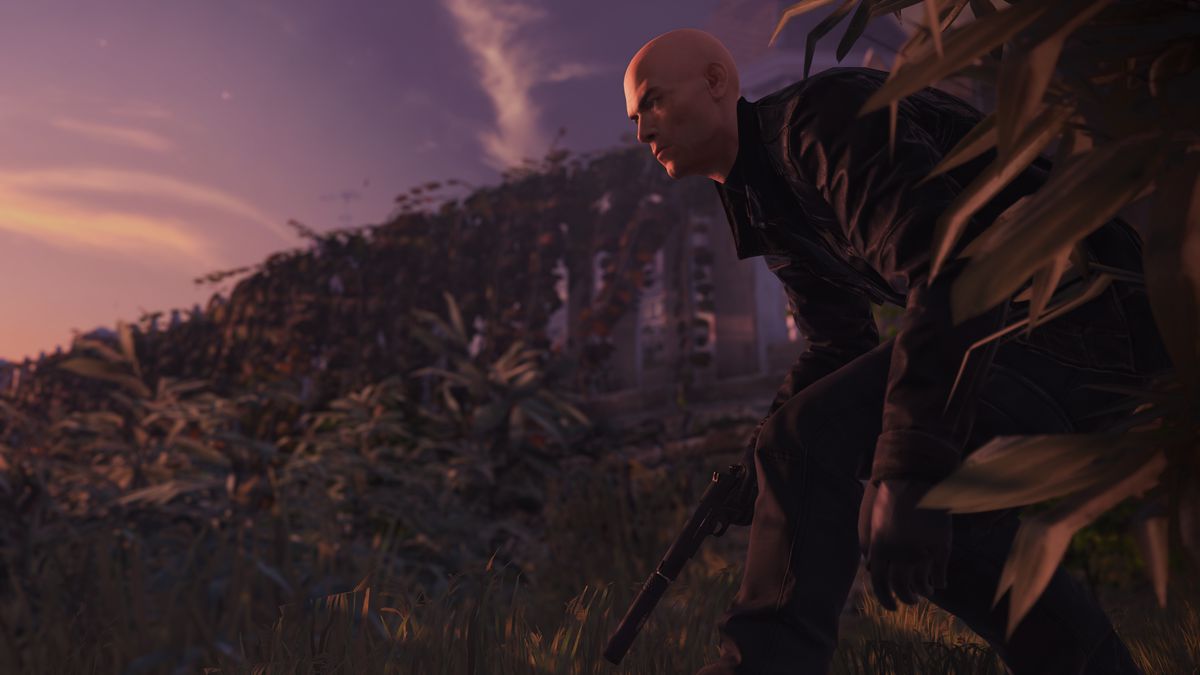
Where to play: PS5, PS4, Xbox One, Xbox Series X, and Windows PC
If ever a series flirted with roguelike conceits without fully committing, it’s IO Interactive’s Hitman trilogy (now collectively called Hitman World of Assassination). Repetition is at the heart of its expertly crafted locales, replete as they are with a variety of tools, weapons, and disguises to help you eliminate targets as creatively as possible, before dropping back in to do it all again with all of the new knowledge you’ve gained.
But where the base games only dabble in the randomness inherent to the roguelike genre, the new Freelancer mode embraces it fully. Items shift around the map, weapons change hands, disguises are rarely where they were on the last run — even your very assassination targets change. Your mission to take out four syndicate leaders across a random assortment of locations is as much about meticulous planning as it is last-minute improvisation. You can build up your safehouse’s weapon collection throughout each run, but as is always the case in the roguelike genre, failure means starting over. Hitman World of Assassination’s Freelancer mode is not only a bold new twist on some of the most well-crafted games of the last decade — it’s one of the best roguelikes in its own right. —Mike Mahardy
Dust & Neon
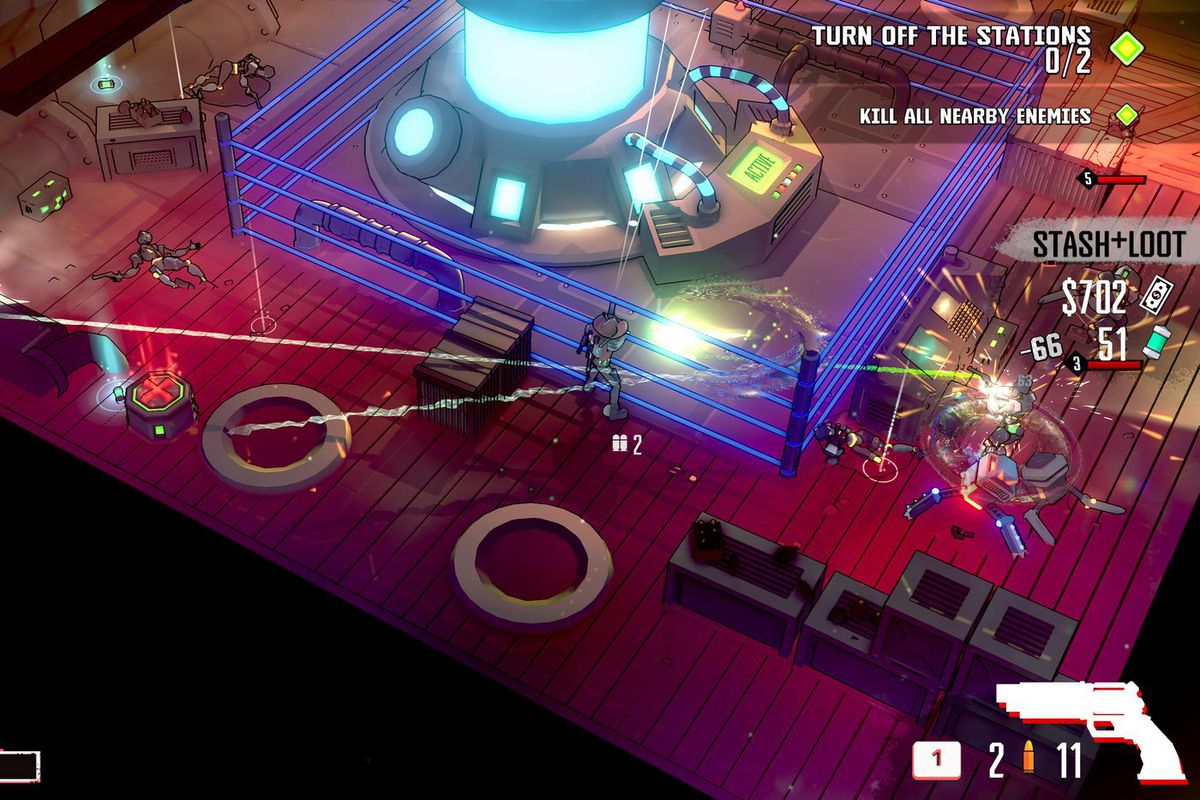
Where to play: Nintendo Switch, Windows PC, and Android
Dust & Neon’s aesthetic might be a little too familiar, but this futuristic Wild West shootout is distinguished by gameplay more than its Borderlands-like looks. Players get a top-down shooter with one great tweak to the formula — reload each round of your weapon, individually — and some high-stakes encounters that make your near escapes even more exhilarating.
Outside of the futuristic ghost towns, railroad depots, saloons, corrals, and other shootouts, players get not just a twist on the distinction between roguelite and roguelike, they get a merging of the concepts. Should he die, the Gunslinger will be revived with his character progression intact (roguelite).
But he will lose all of the weapons he built up over the course of his run (roguelike). It’s a near-permadeath experience that will have you howling, especially when that one last grind mission you take before tackling one of five bosses goes horribly wrong. —Owen Good
Returnal
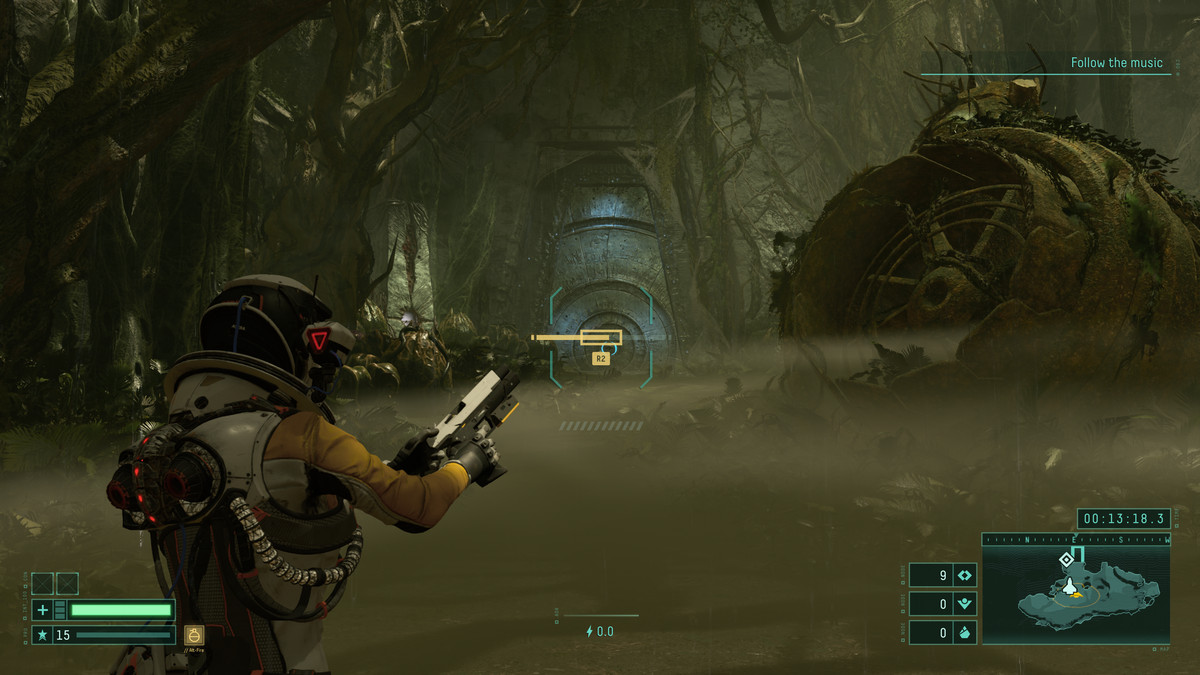
Where to play: PS5 and Windows PC
We kind of spoiled Returnal’s inclusion on this list already, so we might as well use it to kick things off. Previously known for games like Resogun and Nex Machina, Housemarque has always been a studio with a cult following, but it hasn’t necessarily been a household name. That all changed with Returnal.
Set on the planet Atropos, Returnal places you in the space boots of astronaut Selene Vassos, who has found herself locked in a strange time loop that prevents her from staying dead. It’s a brutally challenging third-person shooter that leans heavily into the difficult side of roguelike design, so it’s not for the uninitiated. If the element of roguelikes you’re most interested in is their high skill ceiling, Returnal should shoot its way to the top of your list. If not, it’s probably best to give Atropos a miss. —CM
Rogue Legacy 2
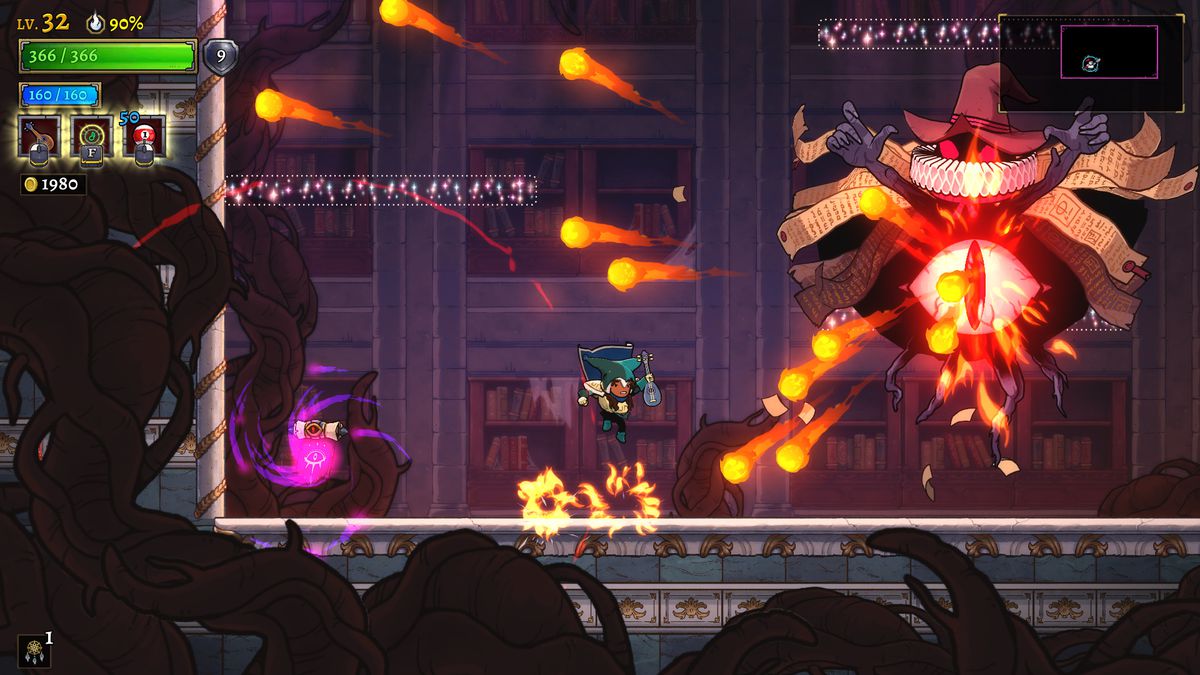
Where to play: Windows PC, Xbox One, and Xbox Series X
While Rogue Legacy has been popular in roguelike circles for almost a decade, its widely lauded sequel catapulted the series to new heights when it launched in early 2022. The first game is good — the second one is better.
Rogue Legacy 2 is a Metroidvania-style platformer that tasks you with traversing procedurally generated dungeons, as is the case with many action-oriented roguelikes. What makes this game stand out is how tight its level design is, beautifully meshing Metroidvania shapes and structures with the precision demanded by only the most unforgiving roguelikes.
It’s probably worth mentioning that, if you’re a pedant, Rogue Legacy 2 — as well as several other games on this list — is technically a roguelite, as opposed to a roguelike. This is because the ability to use currency to purchase permanent upgrades implies a retention of progress across runs, as opposed to every single run forcing you to start from absolute zero.
But hey, it’s still ultimately inspired by Rogue, right? So who cares? —CM
Spelunky 2
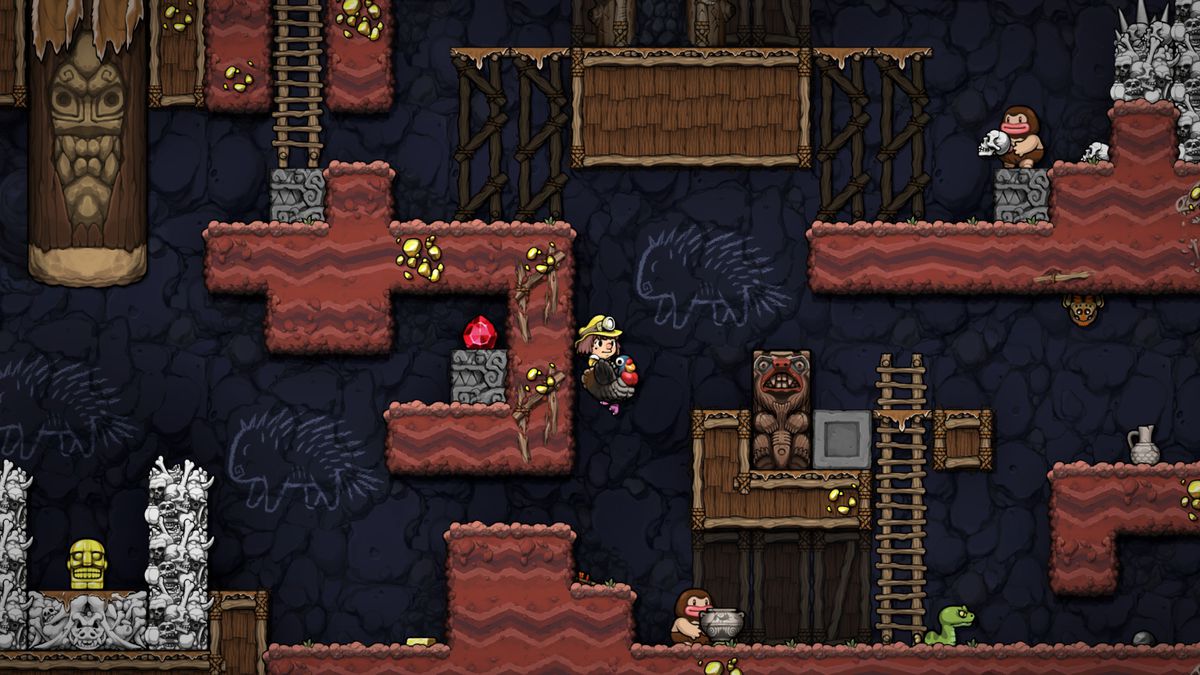
Where to play: Windows PC, PS4, Xbox One, Xbox Series X, and Nintendo Switch
Just like Rogue Legacy, Spelunky started strong yet fared even better on its second outing. It’s another platformer that prides itself on level design above all else, with each new series of procedurally generated caves making a fine case for further spelunking.
It’s worth noting that while Spelunky 2 is definitely stronger than the original, avid roguelike fans shouldn’t neglect the latter. The first Spelunky was a pioneer of contemporary roguelike design, and is in part responsible for starting the genre’s renaissance over a decade ago. If you’re interested in the history of roguelikes but don’t have the patience for some of the more dated stuff, Spelunky offers an excellent place to start. Then you can move on to Spelunky 2, and enjoy the pair as a sort of diorama displaying how much progress has been made in the genre over the last 15 years. —CM
Risk of Rain 2
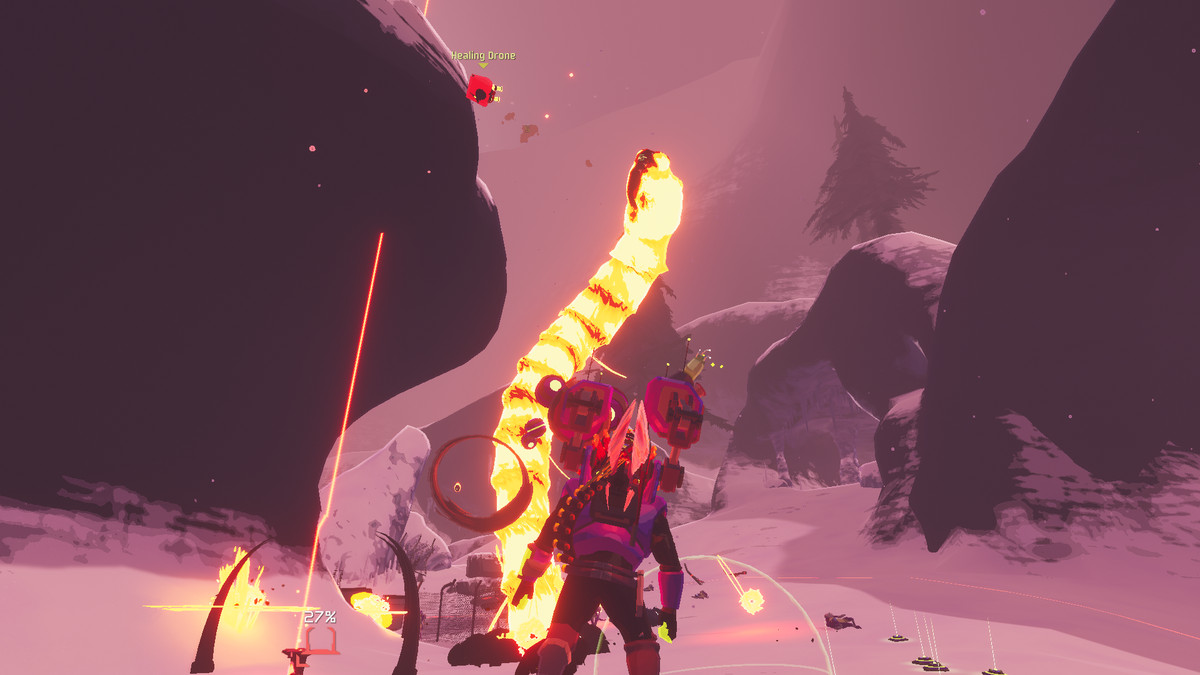
Where to play: Windows PC, PS4, Xbox One, and Nintendo Switch
Another sequel! (Last one, we promise.) Risk of Rain 2 is a third-person shooter that is often regarded as one of the greatest roguelikes ever made, and for good reason. Its high-octane, run-’n’-gun structure is perfectly attuned to both of roguelikes’ most crucial selling points: being enjoyable in relatively short bursts, and being so enjoyable that said short bursts somehow transform into ultramarathons. It’s also basically the Mario 64 of roguelikes.
One of the best things about Risk of Rain 2 is that it supports co-op, which is a sadly undervalued element of most roguelike design. The only thing better than experiencing “Just one more run!” is experiencing it with a friend — especially when said friend is the one helping you to escape a planet on which every living organism wants to kill you. —CM
Inscryption
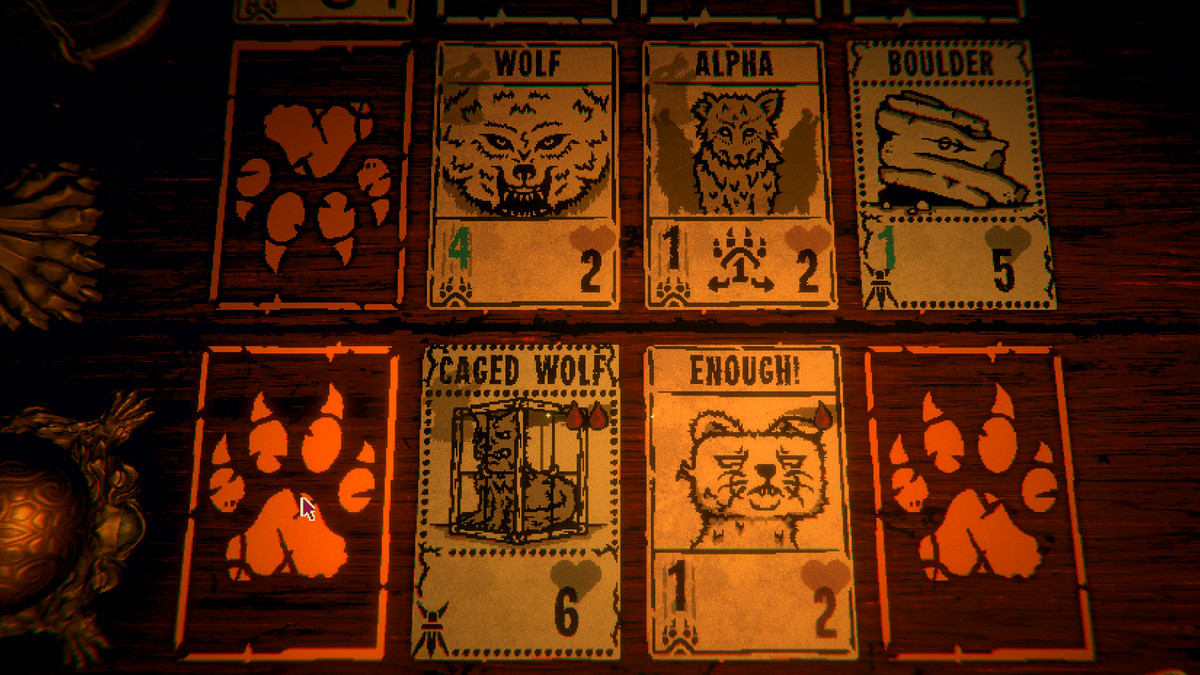
Where to play: Windows PC, Mac, and Linux
Inscryption is a weird amalgam of many things, and all of them are fascinating. To talk about it at length is arguably the only proper way to talk about it at all, although for the sole purpose of encouraging you to play it, we’ll merely set the stage.
At first glance, Inscryption might seem like a slightly edgy yet standard deck-builder. However, it also incorporates found footage, functions as a sort of ARG, introduces a variety of puzzles that operate outside of its proprietary card game, and more. It’s the kind of game you won’t be able to understand until you try it out for yourself — but we promise that you should. If you’re interested in the various shapes and forms roguelikes can take, it’s a must-play. And that’s not to mention the fact it was Polygon’s best game of 2021. —CM
Enter the Gungeon
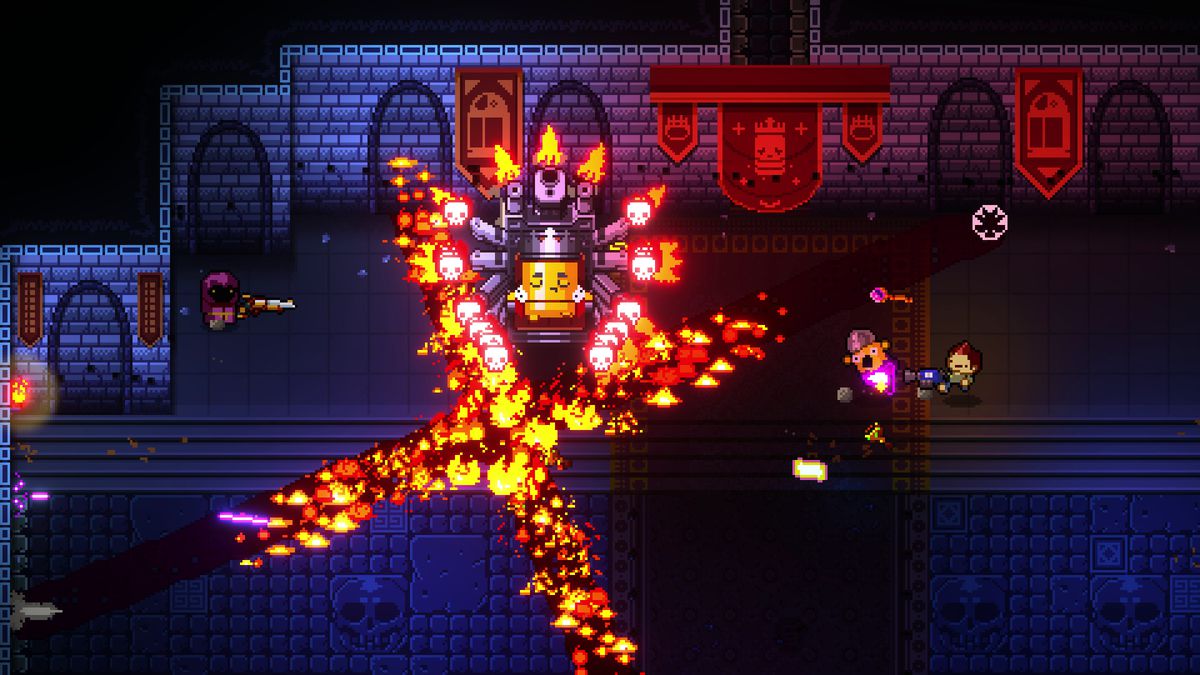
Where to play: Windows PC, Mac, Linux, PS4, Xbox One, and Nintendo Switch
Now considered a classic, Enter the Gungeon is a fast and frenetic bullet-hell shooter that uses procedural generation and immense build variety to double up as a roguelike. As well as having various playable characters, it has literally hundreds of weapons to pick up and experiment with, making mastery of this game a mean feat to accomplish.
The premise of the game is to make your way through the titular Gungeon, defeating enemies and collecting loot as the difficulty progressively ramps up. While simple in theory, it is — like many roguelikes — fiendishly difficult in execution. —CM
Darkest Dungeon
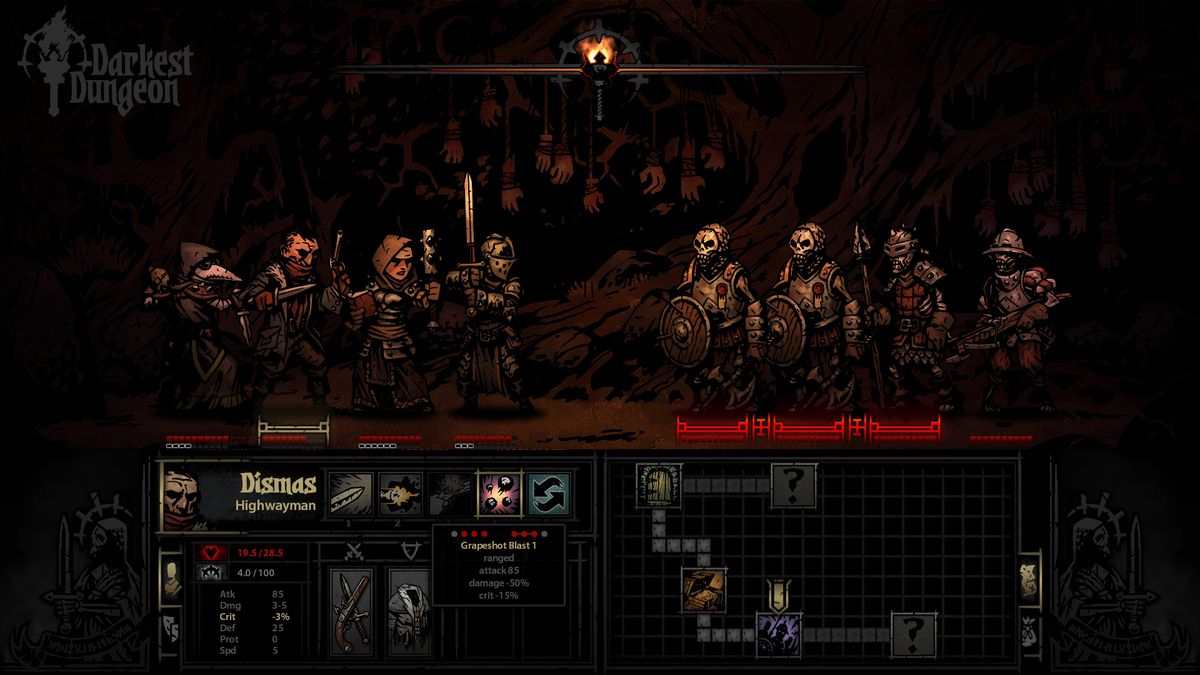
Where to play: Windows PC, Mac, Linux, PS4, Xbox One, Nintendo Switch, and iOS
It’s dark, and it’s got dungeons. What’s not to like?
Darkest Dungeon brings a very welcome complexity to the core functionality of roguelikes. Instead of controlling one character at a time, it tasks you with managing an entire expedition, in which a company of heroes is sent to investigate the weird and wily horrors lurking beneath a Gothic mansion.
As well as having their own classes and skill sets, each hero is individually affected by a Stress mechanic, which makes tending to your party significantly more demanding by incorporating a level of micromanagement beyond conventional combat. If you’re interested in it, the sequel is also currently available in early access and is scheduled to launch in full in early 2023. —CM
Dicey Dungeons
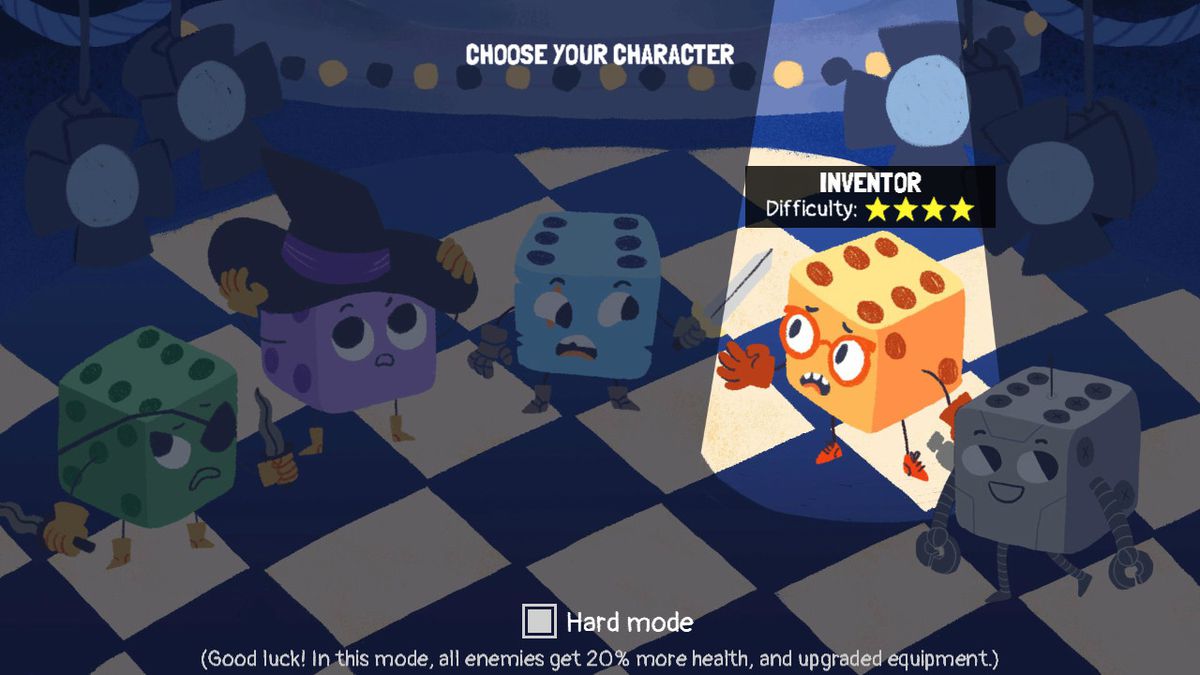
Where to play: Windows PC, Mac, Linux, Xbox One, Xbox Series X, Nintendo Switch, iOS, and Android
As well as having arguably the most unique concept on this list — weird game show in which each contestant is unknowingly transformed into one of several sentient dice — Dicey Dungeons is an extremely tight roguelike deck-builder that makes all kinds of fascinating design choices.
The core gameplay loop involves collecting cards and using dice to activate them in combat. However, playing Dicey Dungeons well demands a much more intricate understanding of the game. After mastering basic runs, you’ll be invited to experiment with tailor-made levels, dubbed “episodes,” which have their own innate challenges: Your health goes down instead of up as you progress, or you’re cursed from the get-go, to name a couple. Every time you solve a puzzle in Dicey Dungeons, your reward is… a harder puzzle. It’s tough but satisfying in the way only the very best roguelikes are. —CM
Gwent: Rogue Mage
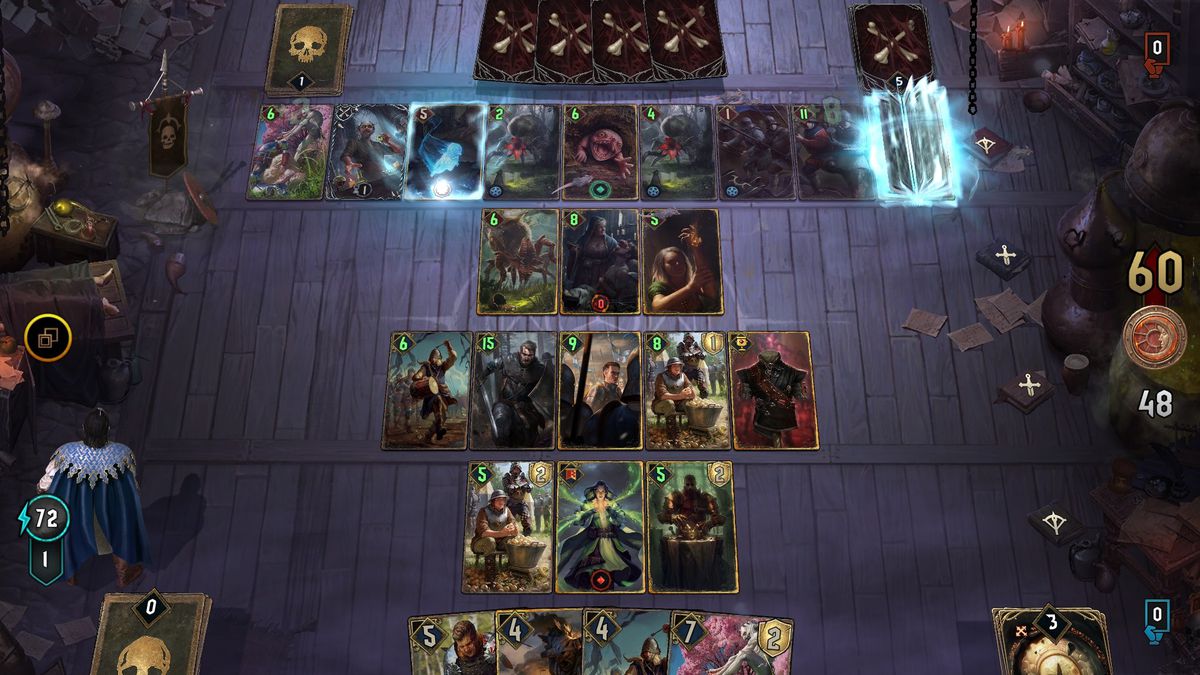
Where to play: Windows PC, Mac, iOS, and Android
Anyone who has had the pleasure of playing The Witcher 3 will already be intimately familiar with Gwent, The Continent’s most popular card game. It became so popular, in fact, that CD Projekt Red decided to give it a game of its own — which was ironically not very popular.
Fortunately, Gwent gained a formidable companion piece with its first expansion, Rogue Mage. It’s a single-player story that reappropriates the base game’s deck-building for a roguelike experience, drastically outshining it in the process. People often complain that there aren’t enough Witcher games, despite the fact that The Witcher, The Witcher 2, and Thronebreaker are all excellent. (The complaint would be more honest if it was “There aren’t enough Witcher 3s.”) Let Rogue Mage be the argument that finally rebuts that criticism once and for all. —CM
Monster Train
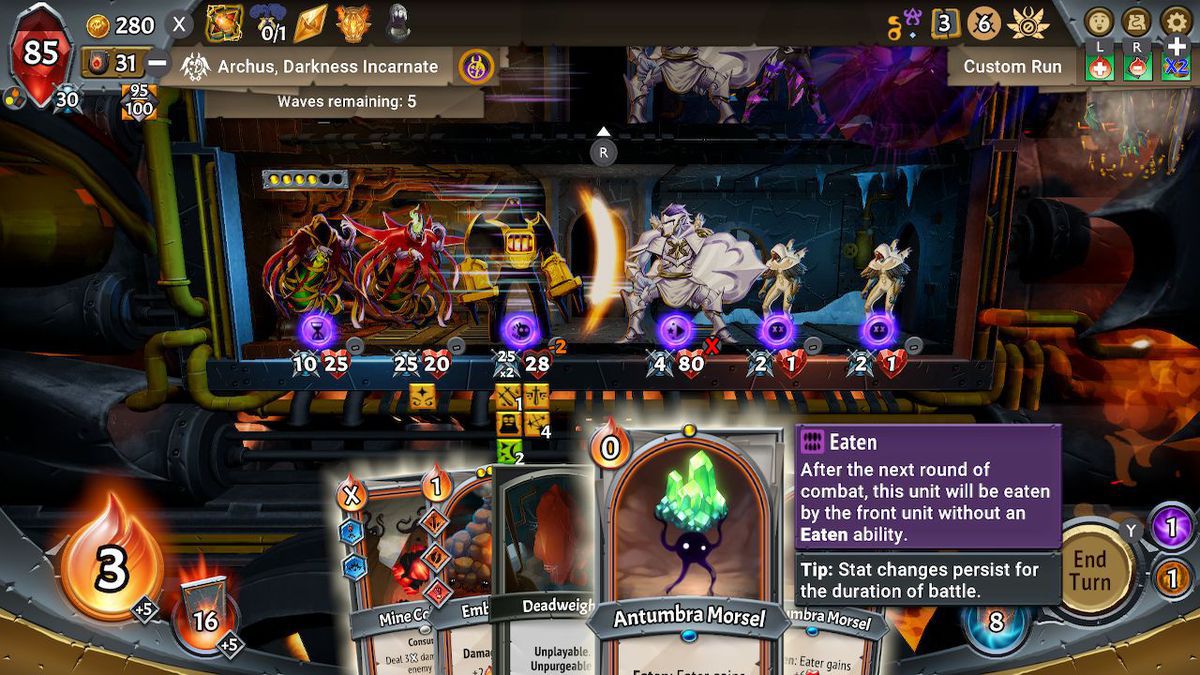
Where to play: Windows PC, Xbox One, and Nintendo Switch
Everyone talks about Slay the Spire — which, spoiler alert, is also on this list — but in many ways, Monster Train is a superior deck-builder. It’s nowhere as stylish as Slay the Spire, nor is it quite as refined, but its verticality mechanic introduces a variety of permutations and combinations that often make planning your next move an ordeal — in a good way, of course. Video games are supposed to be fun.
Monster Train also allows you to combine drastically different factions, which adds compelling build opportunities for players who have mastered the basics. It doesn’t have the nicest aesthetic, and its challenges can often feel a bit… arbitrary, to be generous. In terms of raw deck-building potential, though? Easily one of the best games on the market. The fact that its daily challenge is still actively attempted by hundreds, if not thousands, of people is a testament to that. —CM
Into the Breach
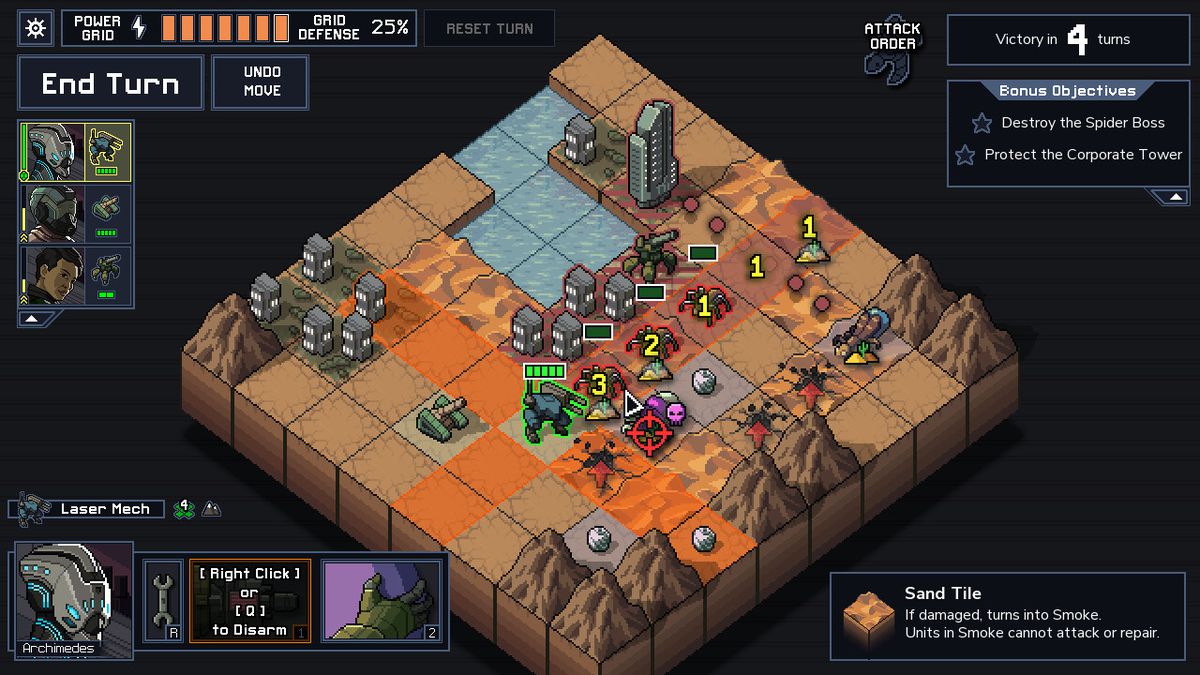
Where to play: Windows PC, Mac, Nintendo Switch, iOS, and Android
Into the Breach differs from the other games on this list in that it is primarily a turn-based strategy game — it is still undoubtedly a roguelike, however.
The objective of the game is to protect civilization from a hostile kaiju species using powerful mechs. This plays out via grid-based combat, which incorporates mobility management as well as standard actions. The elegance and simplicity of Into the Breach allow it to be approachable without compromising its strategic depth, making it a perfect entry point for aspiring roguelike-likers — or roguelikers. It’s also available via Netflix Gaming now, which converts your phone into a convenient* Into the Breach machine. —CM
*dangerous
The Binding of Isaac
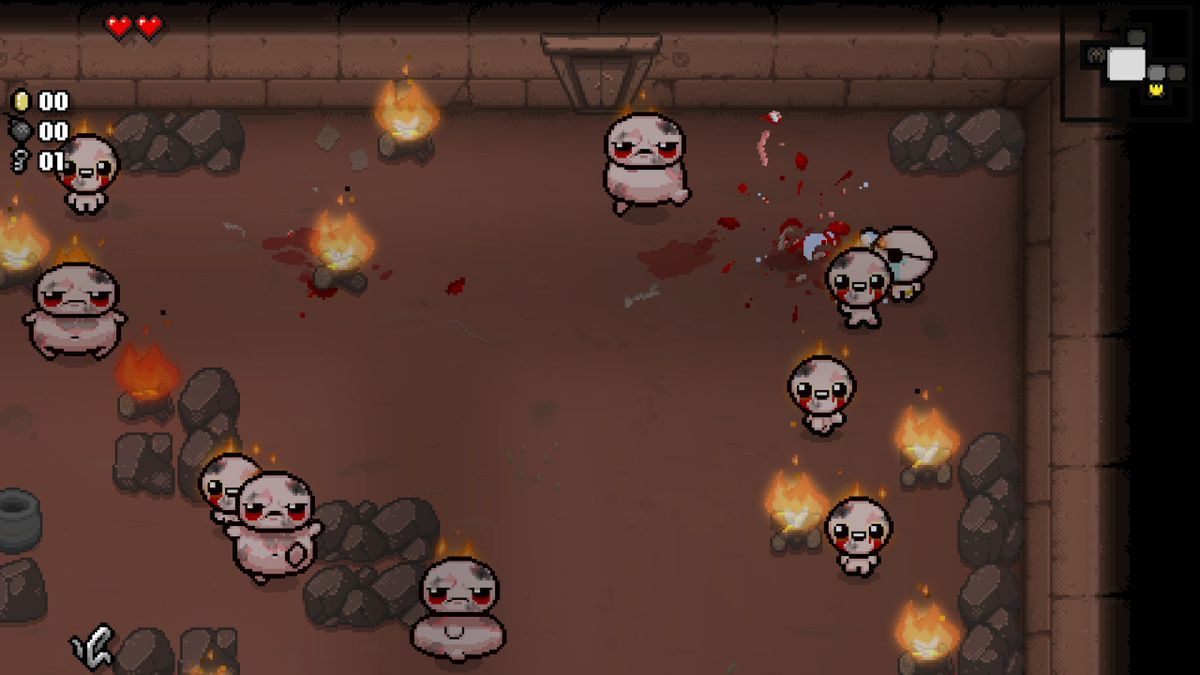
Where to play: Windows PC, Mac, and Linux (The Binding of Isaac: Rebirth is available on Windows PC, Mac, Linux, PS4, PS5, Xbox One, Xbox Series X, and Nintendo Switch)
Most roguelike fans have probably already done their time with The Binding of Isaac, but if you’re new to the genre, it’s a crucial part of its history that shouldn’t be skipped. It’s fair to say we wouldn’t be where we are today without Isaac and his incessant crying.
The Binding of Isaac is a roguelike dungeon-crawler that tasks you with shooting your way through procedurally generated dungeons. While that sounds like a lot of other games, it was one of the first popular modern efforts to introduce… well, all of those descriptors! There certainly have been better roguelikes in the decade since it originally launched, but they’re few and far between, making Isaac not just a classic, but an enduring mainstay in the scene. —CM
Prey: Mooncrash
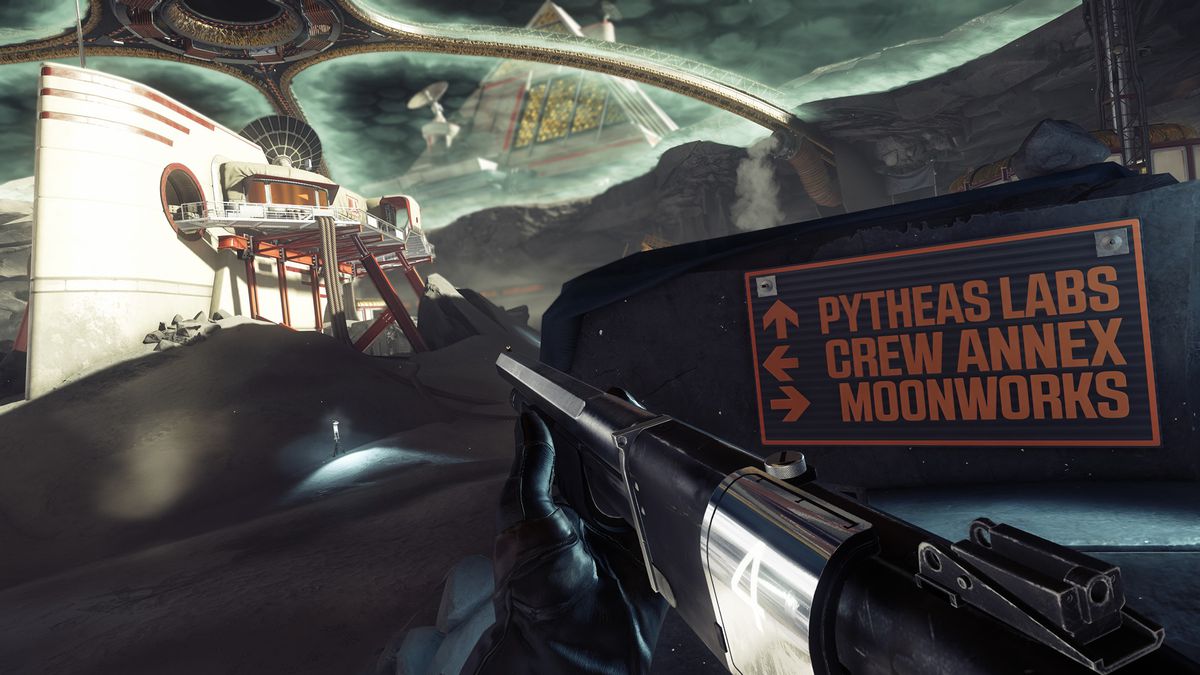
Where to play: Windows PC, PS4, Xbox One
This is admittedly a bit of a weird pick, since it’s technically DLC for a story-driven immersive sim. But the reason I revisited Prey to try out Mooncrash was because it was literally described to me as a “Prey roguelike.” Failing all other logic, that justifies its position on this list.
In all seriousness, Mooncrash is functionally a roguelike in that it offers a high level of variability, a procedurally resetting map, and a total loss of progress upon death. It also has the added benefit of being part of Prey, one of the greatest games of the last decade, developed by one of the greatest games studios of all time. If that doesn’t sell it to you, nothing will. —CM
FTL: Faster Than Light
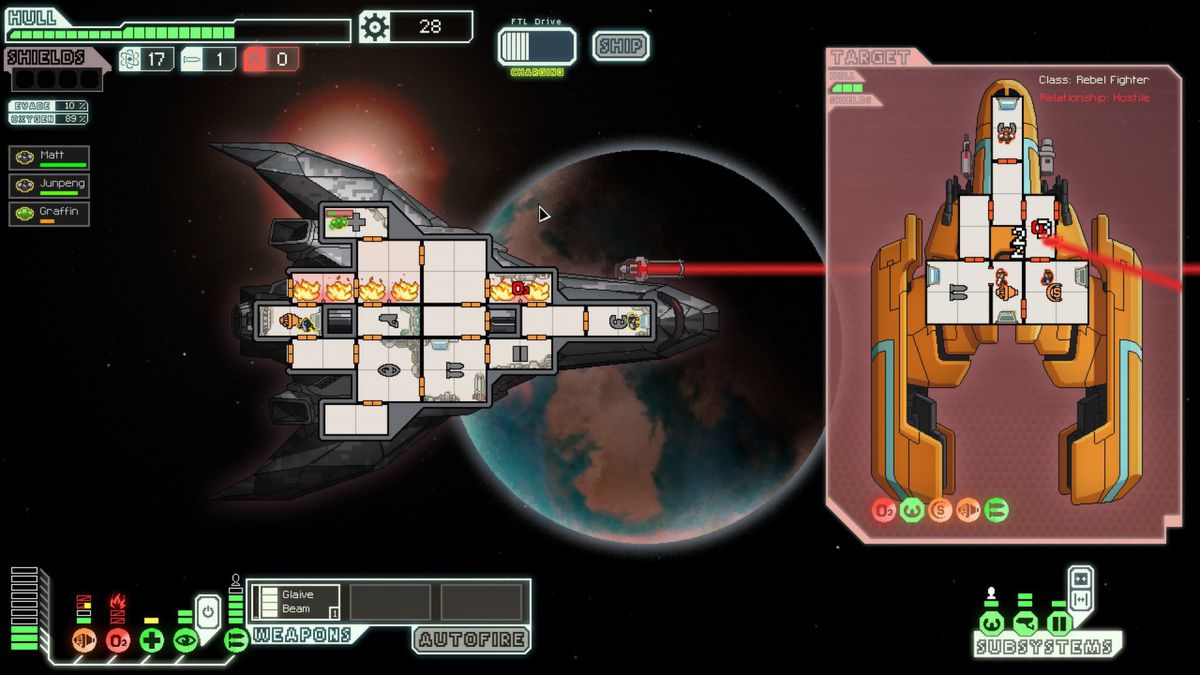
Where to play: Windows PC, Max, Linux, and iOS
FTL is a titan in the roguelike scene, having maintained immense popularity for a whole decade. It was the first effort produced by Subset Games — more recently known for the aforementioned Into the Breach — and is therefore a critical part of the one-two punch that proves the developer managed to dodge a sophomore slump.
Similar to Into the Breach, FTL is one of the less uniform games on this list, in that it basically does… just totally its own thing. You’re tasked with operating a spaceship from a top-down view, from maintaining oxygen levels to rerouting power across shields, weapons, and various other systems. The core gameplay loop involves fighting space pirates, taking over beacons, exploring the galaxy, and much more. And, obviously, if you die, your progress is lost. It’s very tense, but that’s a major part of its charm, and why it still endures as one of the best roguelikes today. —CM
Slay the Spire
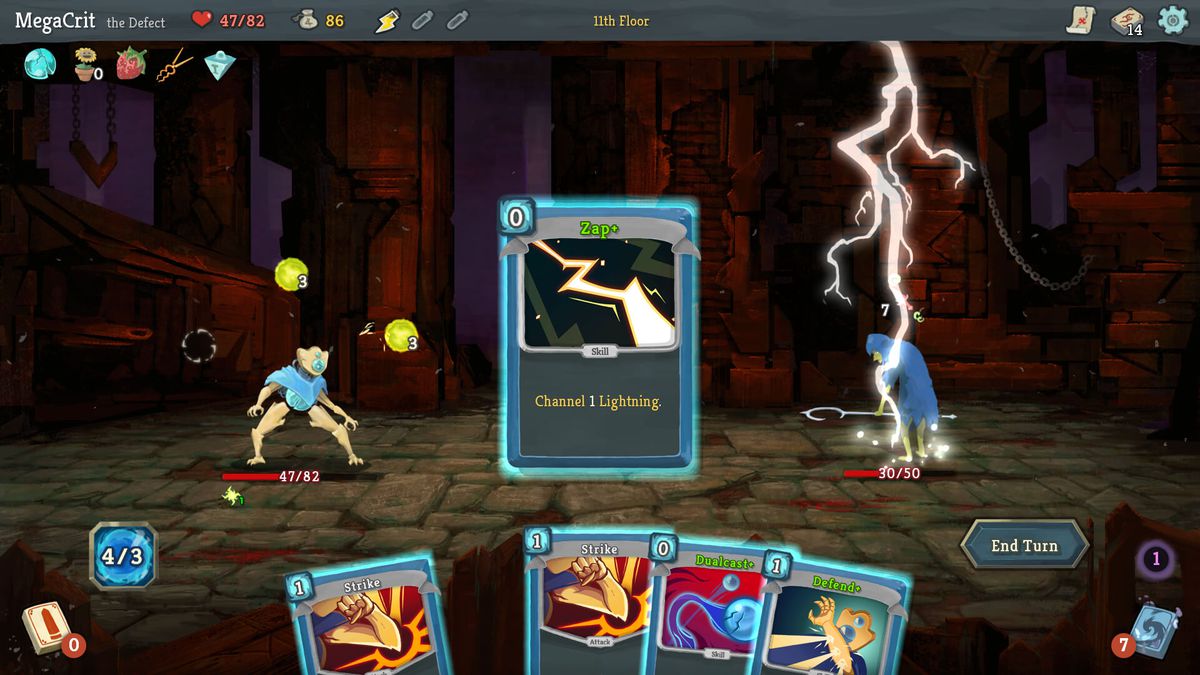
Where to play: Windows PC, Mac, Linux, PS4, Xbox One, Nintendo Switch, iOS, and Android
This should come as no surprise given that we mentioned it earlier, but Slay the Spire is an essential part of any curated roguelike collection. It is partially responsible for the uptick and corresponding popularity of roguelike deck-builders over the last three years, and has since become a staple of the genre.
Most roguelike deck-builders that have come out since Slay the Spire have been forced to deviate from it in increasingly more discernible ways — again, just look at how strange Inscryption is. As a result, it might seem slightly simple compared to more recent titles. But simple is good. It’s why Slay the Spire is still the quintessential roguelike deck-building game, and it’s why that statement will continue to be true no matter how many games follow in its wake. —CM
Loop Hero
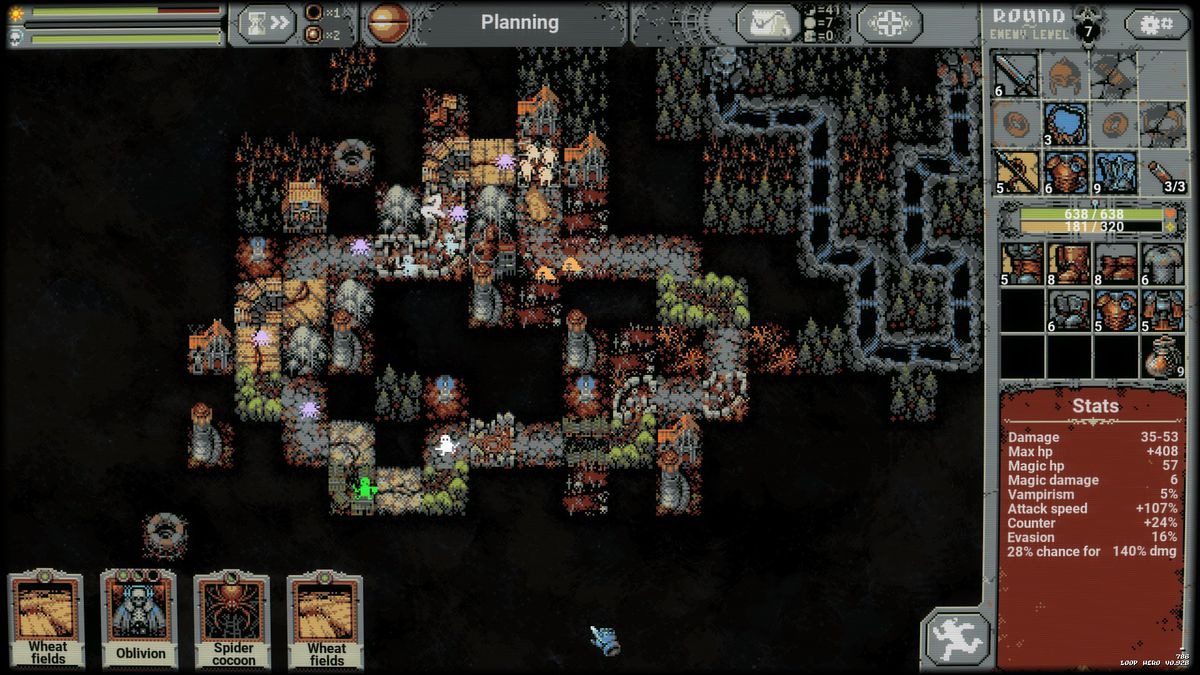
Where to play: Windows PC, Mac, Linux, and Nintendo Switch
Loop Hero is yet another odd collision of genres that becomes something truly original and totally inimitable once you see it play out.
At face value, you walk a hero around a loop. Just a loop. A path that leads only back to itself. But as you spend time with Loop Hero, you’ll start to notice all of its various intricacies: It incorporates deck-building; it includes influences from city-builders and management sims; there are skill and stat modifications.
None of these things should work together, at least in theory — it’s too busy, there’s too much conflict. But somehow Loop Hero is extremely cohesive, and has slowly but surely made a case for itself as one of the best roguelikes ever made. Once you join the loop, it’s hard as hell to leave it behind. —CM
Vampire Survivors
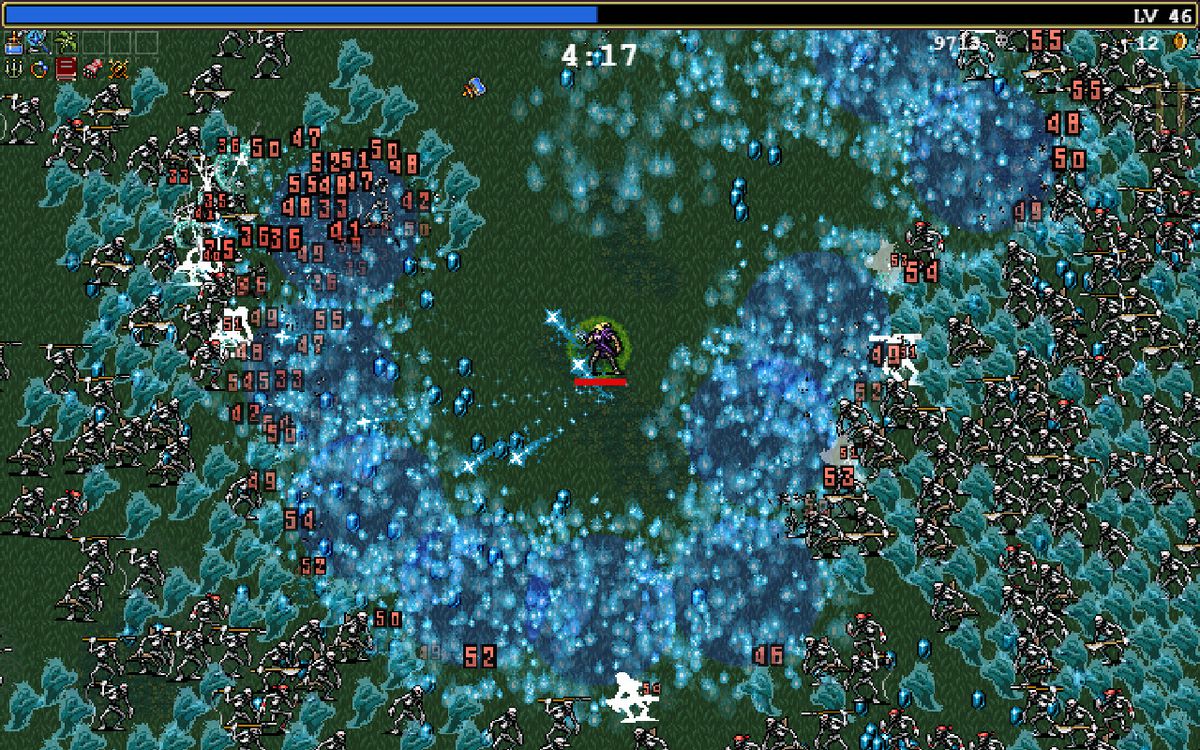
Where to play: Windows PC, Mac, Xbox One, Xbox Series X, Android, iOS, and Nintendo Switch
While 2022 hasn’t been the most exciting year for AAA blockbusters, it’s had its fair share of sleeper hits, one of which is the absurdly excellent Vampire Survivors.
Going off its minimalist art style, limited control scheme, and ostensibly cluttered mob design, you’d be forgiven for thinking that Vampire Survivors is a bit boring. However, beneath all of its chaos is a degree of complexity that makes it exactly what every roguelike aspires to be: near-infinitely replayable.
From soul-harvesting trees to strange old men waving cloves of garlic above their heads, every single run in Vampire Survivors feels like the first time you’ve ever played it, except that somehow you’ve gained intimate knowledge of its sorcerous tricks and darkest arts. It’s one of best games of 2022, and is already a candidate for one of the best roguelikes we’ve seen to date. —CM
Hades
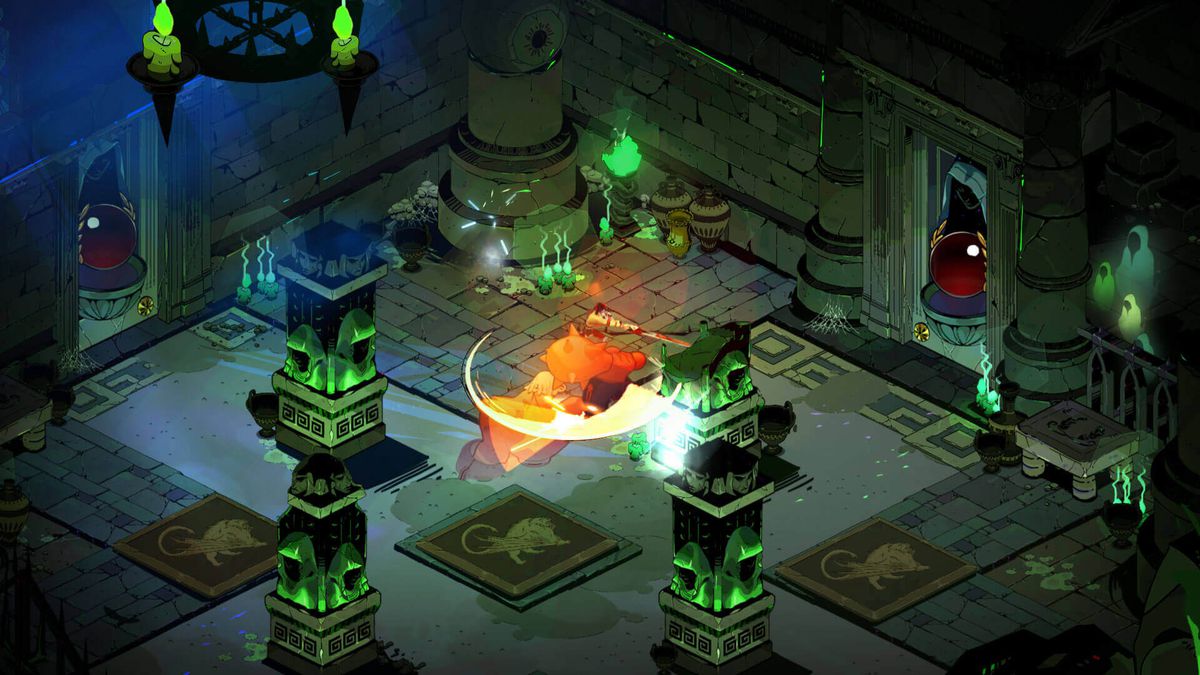
Where to play: Windows PC, Mac, PS4, PS5, Xbox One, Xbox Series X, and Nintendo Switch
As the title arguably responsible for why this list exists, Hades burst onto the scene in late 2020 with the energy of the Underworld’s cheekiest demigod mowing down hordes of hellions in search of his Olympian mother. It’s the main reason “roguelike” went from a relatively niche term to one of the most highly sought-after genres around town. Hell, it even became the first video game in history to win a Hugo Award — Zag and the chthonic crew are just that good.
Developed by Supergiant Games, Hades blends a narrative structure derived from visual novels with the kind of high-octane combat and on-the-fly build experimentation that befits only the best roguelikes — or, in this case, the best roguelike. As denizens of the House of Hades likely already know by now, as soon as you set foot in Tartarus, there is no escape.
You play Hades and you become a rogueliker. It’s that simple. —CM
